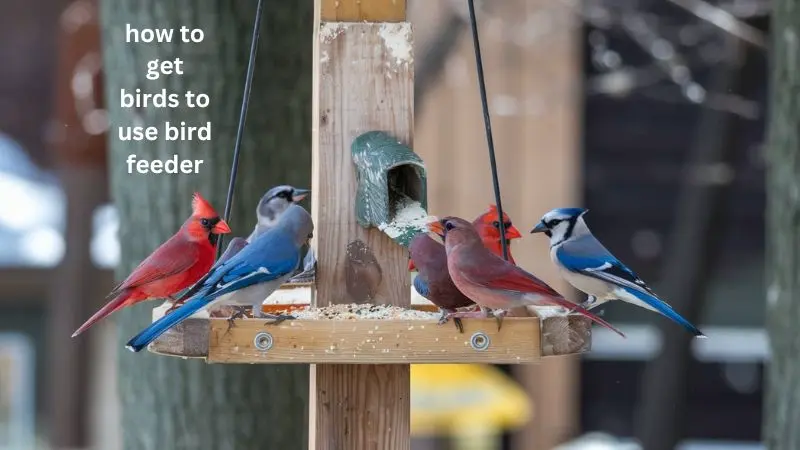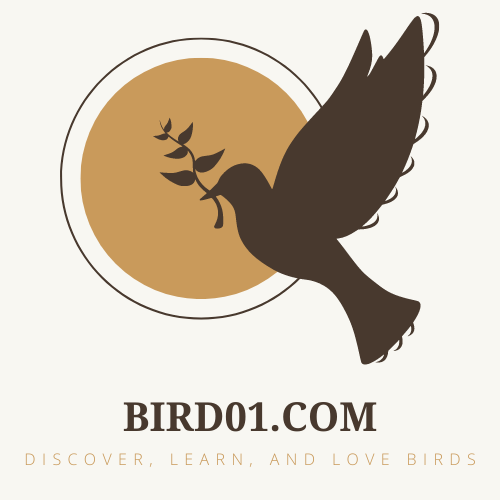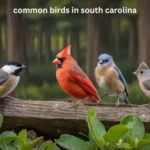Bird01.com is dedicated to helping bird enthusiasts create thriving environments for their feathered friends. If you’ve set up a bird feeder but find that birds aren’t flocking to it as you’d hoped, don’t worry! With some strategic adjustments and a little patience, you can transform your backyard into a bustling bird haven. In this article, we’ll explore effective ways to attract birds to your feeder, ensuring you get to enjoy the beauty and sounds of these delightful creatures.
How To Get Birds To Use Bird Feeder
Choose the Right Bird Feeder
Selecting the appropriate bird feeder is crucial in attracting specific types of birds. There are several designs to consider:
- Tube Feeders: These are versatile and attract a variety of small birds, such as finches and chickadees. They keep seeds dry and are relatively easy to clean.
- Hopper Feeders: Shaped like a house, these feeders dispense seeds from a central reservoir and attract larger birds like cardinals, blue jays, and grosbeaks.
- Platform Feeders: These open feeders attract ground-feeding birds like sparrows, doves, and juncos. They allow you to offer a wider variety of food but require frequent cleaning.
- Suet Feeders: Ideal for attracting woodpeckers, nuthatches, and other insect-eating birds, suet feeders are typically a wire cage that holds suet cakes or balls.
Select the Right Location for Your Feeder
The placement of your bird feeder can significantly impact its success. Birds are cautious creatures, and they need to feel safe when visiting your feeder. Here are some tips for optimal placement:
- Visibility: Place the feeder where birds can easily spot it, such as near a tree or shrub. These natural perches provide birds with a place to survey the area before approaching the feeder.
- Safety: Position the feeder away from areas where predators, such as cats, could hide. A good rule of thumb is to place the feeder at least 10-12 feet away from dense shrubs or low branches.
- Window Safety: If placing the feeder near a window, use decals or hang the feeder very close (within 3 feet) or very far away (more than 30 feet) to prevent birds from colliding with the glass.
Offer the Right Food
Different bird species are attracted to different types of food. Offering a variety of seeds and foods will attract a broader range of birds:
- Black Oil Sunflower Seeds: These are highly popular and attract a wide range of birds, including chickadees, finches, and cardinals.
- Nyjer (Thistle) Seeds: These tiny seeds are favored by finches and siskins.
- Suet: This high-energy food is perfect for woodpeckers, nuthatches, and other insect-eating birds.
- Millet: Often found in mixed seed blends, millet is favored by ground-feeding birds like doves and sparrows.
- Fruit and Nuts: Some species, such as orioles and woodpeckers, enjoy fruits like oranges, apples, and raisins, as well as nuts like peanuts.
Keep Your Feeder Clean
A dirty feeder can deter birds and even make them sick. Regular cleaning is essential:
- Frequency: Clean your feeder every two weeks, more frequently if it’s heavily used or in wet conditions.
- Cleaning Method: Use a solution of one part bleach to nine parts water. Scrub the feeder thoroughly and rinse well. Allow it to dry completely before refilling with fresh seed.
- Check for Mold: Discard any seed that appears moldy or clumped together. Mold can cause serious health problems for birds.

Provide Water Sources
Birds need water for drinking and bathing. Adding a water feature to your yard can significantly increase bird activity:
- Bird Baths: Place a shallow bird bath near your feeder. Change the water regularly to prevent the spread of disease.
- Moving Water: Birds are particularly attracted to moving water. Consider adding a fountain, dripper, or mister to create a gentle splash that will catch their attention.
- Winter Water: In colder climates, consider a heated bird bath or a de-icer to provide a reliable source of water even in freezing temperatures.
Create a Bird-Friendly Habitat
Birds are more likely to visit your feeder if they feel safe and have access to natural food and shelter. Enhance your yard’s appeal with these strategies:
- Native Plants: Planting native shrubs, trees, and flowers provides natural food sources, nesting sites, and shelter.
- Cover and Protection: Dense shrubs or brush piles can offer protection from predators and harsh weather.
- Diverse Plantings: A variety of plants will attract different insects, which in turn attract more birds.
Be Patient and Consistent
It may take some time for birds to discover and trust your feeder, especially if you’re new to bird feeding. Consistency is key:
- Keep Feeders Filled: Regularly refill your feeders with fresh seed, even if it seems like no birds are visiting.
- Seasonal Changes: Bird populations change with the seasons. Be aware of which species are common in your area during different times of the year and adjust your offerings accordingly.
Use Visual and Auditory Cues
Birds rely heavily on their senses to find food. Here’s how you can use sight and sound to your advantage:
- Visual Attractants: Brightly colored feeders, especially in red and yellow, can attract species like hummingbirds and goldfinches.
- Auditory Cues: Placing a recording of bird songs or calls can pique the curiosity of nearby birds, drawing them to your feeder.
Manage Competition and Predators
Birds are more likely to visit if they feel safe from predators and have easy access to food:
- Squirrel Baffles: Install baffles on feeder poles or use squirrel-proof feeders to keep these crafty critters from stealing seed.
- Predator Guards: If cats or other predators are an issue, consider installing guards around the feeder area or use motion-activated sprinklers to deter them.
- Limit Aggressive Birds: Sometimes, larger birds like starlings or blackbirds can monopolize feeders. Offer them a separate feeding area with their preferred foods, such as cracked corn, to keep them away from feeders meant for smaller birds.
Monitor and Adapt
Observing bird behavior at your feeder can provide insights into what’s working and what’s not:
- Adjust Food Types: If a particular seed mix is not attracting birds, try changing to a different type, such as black oil sunflower seeds or nyjer.
- Change Feeder Location: If birds are not visiting, try moving the feeder to a different location in your yard.
- Reduce Waste: If seed is being spilled or wasted, consider using a feeder with a tray or catch basin to minimize mess.
Participate in Citizen Science
Engaging with local birding communities can be both enjoyable and informative:
- Join Bird Counts: Participate in events like the Great Backyard Bird Count to contribute data and learn about local bird populations.
- Share Observations: Connect with other bird enthusiasts through social media or birding forums to share tips and experiences.
Conclusion
Attracting birds to your feeder involves a combination of the right feeder type, food, location, and a welcoming environment. By following these guidelines and remaining patient, you’ll soon enjoy the delightful presence of birds in your yard. Bird01.com hopes this guide helps you create a vibrant bird-watching experience that brings joy to both you and the feathered visitors. Happy birding!





